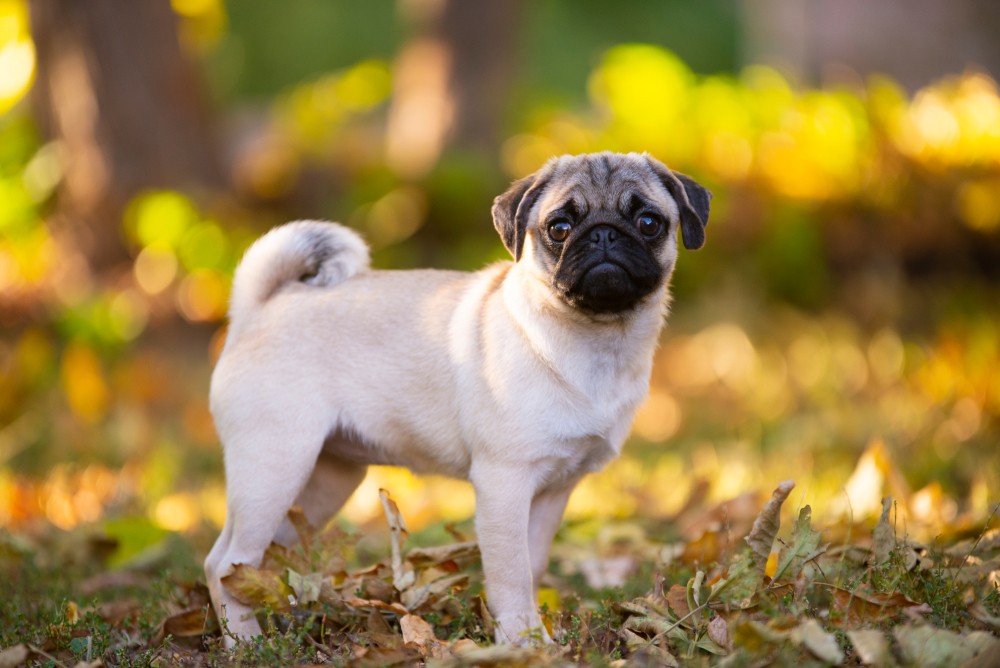
Pugs, one of the most beloved companion dog breeds, typically have a life expectancy of 12-15 years, with females generally living slightly longer (13.2 years) compared to males (12.8 years). While this lifespan is relatively good for a medium-sized dog, it can vary significantly based on factors like genetics, diet, exercise, and overall healthcare. The longest-lived Pug on record was Snookie, who reached an extraordinary age of 27 years and 284 days. Despite their endearing qualities, Pugs face several breed-specific health challenges that can impact their longevity, making proper care and regular veterinary attention crucial for maximizing their lifespan.
Expected Lifespan of a Pug
Average Life Expectancy
According to recent studies, pugs have an average life expectancy of 12-15 years, with male pugs living approximately 12.8 years and females living slightly longer at 13.2 years. This lifespan is considered above average compared to other dog breeds, which typically live 10-13 years.
Record-Breaking Longevity
The record for longest-living pug belongs to Snookie, who lived to be 27 years and 284 days old. This South African pug's remarkable longevity is particularly noteworthy given that pugs are brachycephalic breeds, which often face respiratory challenges that can impact their lifespan. Snookie's case demonstrates that with proper care and favorable genetics, pugs can significantly exceed their typical life expectancy.
Typical Life Expectancy of Pugs
Life Expectancy by Size and Breed Type
While previous sections covered average lifespan, research shows that as a small breed dog, pugs benefit from the correlation between smaller size and longer lifespan. According to studies, smaller dogs age more slowly and can live nearly twice as long as larger breeds. However, pugs don't live as long as other small breeds like miniature poodles (18 years) or Chihuahuas (16 years) due to their brachycephalic breeding history.
Factors Impacting Longevity
Unlike previously discussed averages, specific factors can significantly impact individual pug lifespans. Purebred pugs typically have shorter lifespans (11.9 years) compared to mixed breed pugs (13.1 years). This difference is attributed to the selective breeding practices focused on appearance rather than health. Some breeders are now creating healthier hybrid varieties like retro pugs and puggles to help extend lifespans.
Key Health Issues Affecting Pug Lifespan
Life-Threatening Conditions
While previous sections covered general life expectancy, two major health conditions can significantly impact pug longevity. Pug Dog Encephalitis (PDE), a fatal inflammatory brain condition, primarily affects young pugs between ages 2-4. Additionally, Brachycephalic Obstructive Airway Syndrome (BOAS) can lead to severe breathing difficulties and potentially fatal heat strokes due to their flat-faced anatomy.
Critical Health Complications
Beyond respiratory issues, pugs face other serious health risks that can shorten their lifespan. Gastric torsion (bloat) can be fatal within hours if left untreated. Heart problems are also prevalent, with symptoms including sudden weakness, rapid breathing, and collapse. These conditions require immediate medical intervention to prevent premature death.
Expected Lifespan of a Pug
Regional Life Expectancy Variations
While previous sections covered global averages, regional differences show notable variations. In the United States, pugs have a slightly higher average lifespan of 13-15 years compared to European pugs at 12-14 years. Climate plays a significant role, as pugs in temperate regions tend to live longer due to fewer respiratory challenges from extreme temperatures.
Senior Life Stage Markers
Unlike the general lifespan statistics covered earlier, specific age milestones indicate a pug's senior life stage. Pugs are considered seniors by age six, equivalent to 40 human years. At this stage, they require adjusted care with reduced exercise intensity, more frequent health monitoring, and potential dietary supplements to maintain quality of life through their remaining years.
Conclusion
The research indicates that pugs typically live between 12-15 years, with females having a slightly longer average lifespan (13.2 years) compared to males (12.8 years). While this exceeds the typical 10-13 year lifespan of most dog breeds, pugs face several breed-specific health challenges that can impact their longevity, particularly Brachycephalic Obstructive Airway Syndrome (BOAS) and Pug Dog Encephalitis (PDE). Mixed breed pugs tend to live longer than purebreds, with averages of 13.1 and 11.9 years respectively.
These findings highlight the importance of proper healthcare and genetic diversity in breeding practices for maximizing pug lifespan. While cases like Snookie, who lived to 27 years, demonstrate the potential for exceptional longevity, most pugs enter their senior years around age six. This suggests that early preventative care, careful monitoring of respiratory health, and appropriate lifestyle adjustments for aging pugs are crucial for supporting their quality of life and potential lifespan. Prospective pug owners should be prepared for the specialized care requirements and potential health challenges associated with this breed.